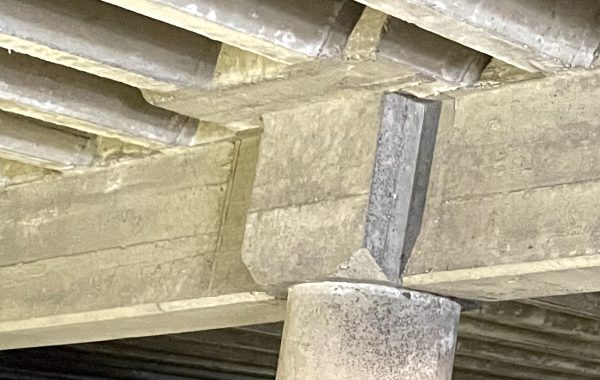Vierendeel trusses are misnamed. They’re really frames, not trusses. In ordinary trusses, most or all of the members are designed for primary stress consisting of axial load, while every piece of a vierendeel, by definition, has bending. But they have been used (when they’ve been used, which is not that often) in the same places that ordinary trusses have been used, and so can be said to serve a similar role.
The 1921 Black River Bridge, carrying Grand Avenue in Neillsville, Wisconsin, has three spans of vierendeels as its main structure. Like most trusses of this type, there’s little indication of the magnitude of the forces. In other words, in an ordinary steel Pratt truss of the era, the diagonals would be visibly bigger on the end panels than at the middle, reflecting the higher forces there. In reinforced concrete, you have the option of making the members bigger when forces increase or of reinforcing them more heavily. The first option reflects the forces, the second hides them.

True, the square openings at the end of each span are smaller than the others, providing a thicker top chord there, but the sloped top of the truss makes this look like an aesthetic arrangement, even if it’s structural.
There’s another discussion to be had here, which I find more interesting: the trusses of this bridge show the limits of classification. Not just the truss versus vierendeel classification problem, but the vierendeel versus beam classification problem. You can put holes through the web of a beam without interfering with its basic structural action – compression on one side, tension on the other, and the web connecting the two primarily though shear. I don’t have the slightest problem classifying this bridge as a concrete beam. The analysis of this as a beam with holes or as a vierendeel truss will lead to pretty much identical results, which is another way of saying that the classification is solely for our benefit in thinking about it. The forces do what they do regardless of what description we attach to the structure.
That issue exists almost everywhere. We assign roles to building elements based on what we think they should be doing, but careful observation and analysis may show that our classification isn’t all that accurate. Non-structural partitions may be carrying load, the difference between a wall and a beam may be blurry, and lintels in masonry walls can be arches and beams at the same time. What matters is not what we name a piece of a building, but that we analyze it in a manner consistent with reality and that shows it works.
Finally, the concrete handrail set into the structural openings in the vierendeels is a nice and aesthetically-pleasing touch:





Permalink